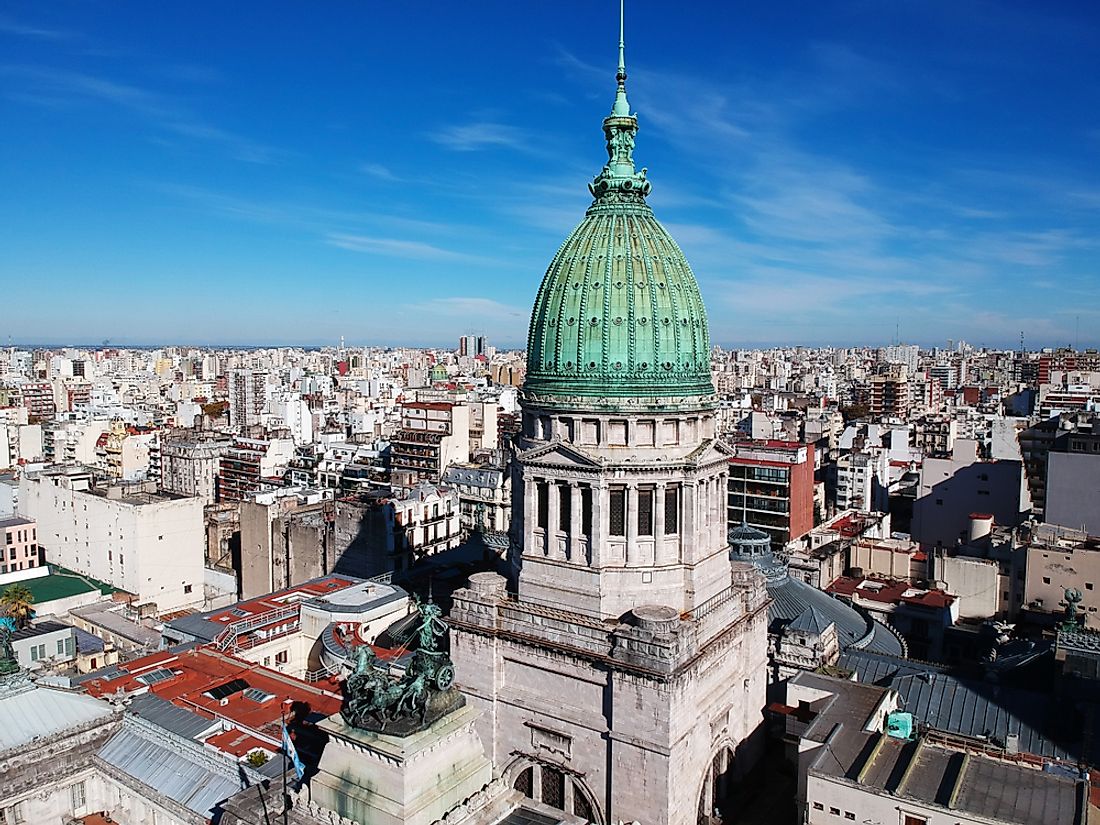What Type Of Government Does Argentina Have?

Argentina is a presidential democratic republic where the President is the Head of State and the Head of Government, and the Commander-in-Chief of the armed forces. The government operates in three branches: the executive, the legislature, and the judiciary. The President the most powerful of all the three arms of the government and has the power to draft his bills, declare a state of emergency or war, and to suspend the Constitution.
The Executive Branch Of The Government Of Argentina
The President exclusively exercises the executive power. The nation elects the President and the Vice President through universal suffrage. The election takes place in two rounds where the first round determines the two leading President and Vice President tickets. The two tickets then go for a second round and the ticket that gets the majority vote becomes the president and the Vice President. The President and the vice President serve for a four- year term and eligible for another term. The President then appoints the ministers who will be members of the cabinet. The last election was held in two rounds on October 25, 2015, and on November 22, 2015, the next election will be held in October 2019.
The Legislative Branch Of The Government Of Argentina
Argentina has a bicameral National Congress. The Congress consists of the Senate and the chamber of deputies. The Vice-President presides over the Senate which has 72 members who are elected directly in multi-seat constituencies by a simple vote. The chamber of deputies has 257 members who are elected directly in multi-seat constituencies by a proportional representation vote. The Senate serves for six years as the deputies serve for four years. Each province directly elects deputies who represent the people of the nation and the senators who represent the districts. Each district elects deputies through proportional representation and three senators to represent two majorities and one minority. Functions of the Senate include changing the federal revenue policies, ratifying international treaties, confirming or impeaching the President or the nominees to the cabinet. It can also disapprove or approve changes regarding the constitutional laws. The chamber of deputies performs functions such as drafting troops and levying taxes.
Judiciary Of Argentina
The judiciary consists of the Supreme Court, federal judges and others with different jurisdictions. The Supreme Court is made up of the President of the court, the Vice President, and five Judges. The head of state appoints these members with the approval of the Congress. The Supreme Court is the highest court of appeal and decides on cases that deal with the Constitution. Members of the judiciary serve for a life appointment. There are also the subordinate courts which include the federal level courts and the provincial-level courts.
Local Government Of Argentina
Argentina has 23 districts called provinces and one autonomous district which host the national capital. Each province has its Constitution, laws, and forms of government. Each form of government in the provinces has three branches which are executive, legislature, and judiciary. Each province has districts known as departments which in turn have municipalities.
Elections In Argentina
All citizens aged 16 and above in Argentina have the right to vote. The people elect the President and the vice-President through proportional representation by universal adult suffrage. Elections are free and fair. Citizens elect the deputies through closed-list which means that they are not allowed to change the order that candidates appear on the list. Every electoral district has its electoral laws.
Argentina adopted the Constitution in 1853 which governs the activities of the government and the people. The Constitution provides a federal union where power is distributed throughout governing bodies in the provinces. However, the government keeps suspending and revising the Constitution. Among the amendments to the Constitution are elements such as reducing the President term of service, provision for Presidential re-election and introduction of the two-round system of voting if the candidate receives less than 45% of the total votes.











